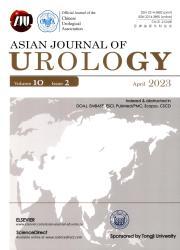Deciphering riddles in molecular subtyping of bladder cancer
IF 2.4
3区 医学
Q2 UROLOGY & NEPHROLOGY
引用次数: 0
Abstract
Objective
Bladder cancer (BCa) is a prevalent malignant tumor in the urinary system. Molecular subtyping, utilizing molecular characteristics, represents a novel classification system that has demonstrated its efficacy in tumor diagnosis and treatment. Given the critical role of molecular subtyping in the BCa treatment, acquiring a comprehensive understanding is imperative for guiding treatment decisions, optimizing risk assessment systems, and ultimately improving patient prognosis.
Methods
In this review, we provide a comprehensive overview of the research progress in molecular subtyping of BCa, with a primary focus on discussing its utility in guiding various treatment modalities including neoadjuvant chemotherapy, neoadjuvant immunotherapy, and targeted therapy. In addition, this review also covers the trimodality treatment, antibody-drug conjugates, and the treatment of small cell BCa.
Results
We present a comprehensive overview of the responsiveness or resistance of different molecular subtypes of BCa to various therapeutic modalities. The basal subtype demonstrates favorable sensitivity to neoadjuvant chemotherapy across multiple classification systems, whereas the luminal infiltrated subtype exhibits potential susceptibility to immunotherapy. In terms of targeted therapy, the basal-like and the basal/squamous subtypes in some classifications have shown notable responsiveness to epidermal growth factor receptor-targeted therapy. Moreover, the luminal subtype in the University of Texas M.D. Anderson Cancer Center classification, the luminal papillary subtypes according to the Cancer Genome Atlas Research Network classification in 2017, and the luminal unstable type in the 2019 Molecular Subtyping classification show potential for the fibroblast growth factor receptor 3-targeted treatment.
Conclusion
The significance and impact of BCa molecular subtyping in guiding treatment, evaluating progression, and predicting prognosis are increasingly acknowledged. Accurate subtyping and broad application can bring good benefits to clinical decision-making, risk assessment, and prognostic evaluation.
解读膀胱癌分子分型的谜题
目的膀胱癌是泌尿系统常见的恶性肿瘤。分子分型,利用分子特征,代表了一种新的分类系统,已证明其在肿瘤诊断和治疗的有效性。鉴于分子分型在BCa治疗中的关键作用,获得全面的了解对于指导治疗决策,优化风险评估系统,最终改善患者预后至关重要。方法本文综述了BCa分子分型的研究进展,重点讨论了BCa分子分型在指导新辅助化疗、新辅助免疫治疗和靶向治疗等多种治疗方式中的应用。此外,本文还综述了三模治疗、抗体-药物偶联物和小细胞BCa的治疗。结果我们全面概述了不同分子亚型BCa对各种治疗方式的反应性或耐药性。基础亚型在多种分类系统中对新辅助化疗表现出良好的敏感性,而管腔浸润亚型对免疫治疗表现出潜在的敏感性。在靶向治疗方面,一些分类中的基底样和基底/鳞状亚型对表皮生长因子受体靶向治疗表现出显著的反应性。此外,德克萨斯大学M.D.安德森癌症中心分类中的管腔亚型、2017年癌症基因组图集研究网络分类中的管腔乳头状亚型以及2019年分子亚型分类中的管腔不稳定型显示出成纤维细胞生长因子受体3靶向治疗的潜力。结论BCa分子分型在指导治疗、评价进展、预测预后等方面的意义和作用日益受到重视。准确的亚型分型和广泛的应用可为临床决策、风险评估和预后评价带来良好的效益。
本文章由计算机程序翻译,如有差异,请以英文原文为准。
求助全文
约1分钟内获得全文
求助全文
来源期刊

Asian Journal of Urology
UROLOGY & NEPHROLOGY-
CiteScore
4.00
自引率
3.80%
发文量
100
审稿时长
4 weeks
期刊介绍:
Asian Journal of Urology (AJUR), launched in October 2014, is an international peer-reviewed Open Access journal jointly founded by Shanghai Association for Science and Technology (SAST) and Second Military Medical University (SMMU). AJUR aims to build a communication platform for international researchers to effectively share scholarly achievements. It focuses on all specialties of urology both scientifically and clinically, with article types widely covering editorials, opinions, perspectives, reviews and mini-reviews, original articles, cases reports, rapid communications, and letters, etc. Fields of particular interest to the journal including, but not limited to: • Surgical oncology • Endourology • Calculi • Female urology • Erectile dysfunction • Infertility • Pediatric urology • Renal transplantation • Reconstructive surgery • Radiology • Pathology • Neurourology.
 求助内容:
求助内容: 应助结果提醒方式:
应助结果提醒方式:


